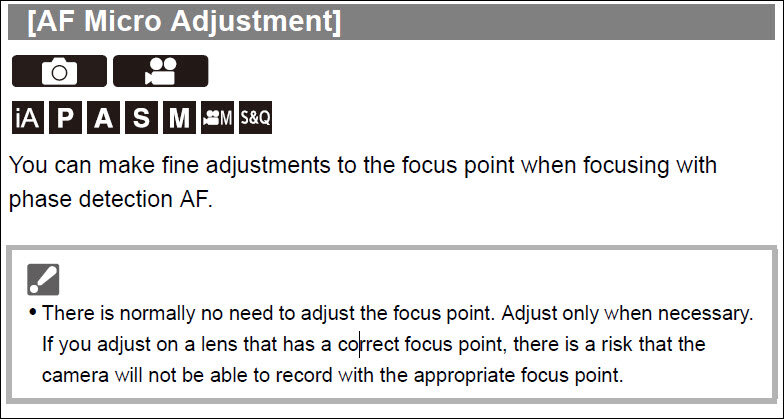I found an interesting study conducted by Reikan Technology Ltd, the UK company that makes FoCal (a program that assists in the calibration of PDAF focus systems). The study addresses the issue as to whether PDAF calibration has benefits for mirrorless cameras, with their on-sensor PDAF systems. DSLRs use a separate phase-detect autofocus sensor--as the mirror blocks the image sensor--so the potential for miscalibration should be larger for DSLRs. This is essentially what they find. Mirrorless systems with on-sensor PDAF are far less likely to require adjustment than DSLRs, but even with mirrorless systems there is a significant number of cases where a camera-lens combination will benefit from calibration. They tested the Nikon Z system, and compared it to Nikon F DSLRs. Here is a brief overview of the results:
DSLRs (F-mount): Just over 96% of tested lenses benefit from autofocus calibration, and the vast majority of these require far more than one step of calibration. This is consistent with my experiences with Pentax DSLRs, where I calibrated everything!
Mirrorless (Z-mount): most lenses did NOT benefit noticably from calibration, although a substantial minority required significant calibration for best performance. Here's the breakdown:
- just over 30% required ZERO units of adjustment
- roughly 67% required ONE unit of adjustment or less "which is not going to make a significant visual difference"
- roughly 10% required at least four units of adjustment "which would definitely produce a visible difference to image sharpness"
They also found that F-mount AF lenses adapted to Z-mount are more likely to receive significant visual benefit from calibration (25%) than native Z-mount lenses (10%). This may explain why Sony makes calibration available for adapted EF lenses, but not for native E-mount lenses. By the way, Canon also does not make calibration available for their mirrorless lenses.
Here's a link to their results:
Do you need to calibrate mirrorless cameras? Here's the evidence from FoCal IQ that you really should, and an explanation of why.
blog.reikanfocal.com
Given that they sell calibration software they may be a bit biased, but I found their results interesting and largely believable. It's good that Panasonic has made calibration available to users, unlike Sony and Canon. It might not matter with a majority of lenses, but it's great to have this capability for those cases where it does matter.

